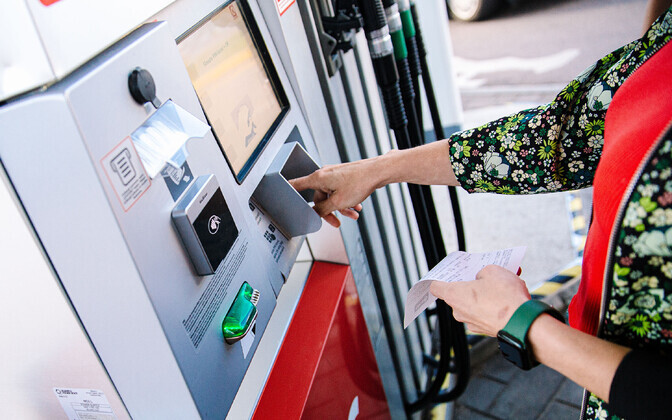On Monday last week, diesel at Estonian gas stations started at €1.189 per liter, but a week later had jumped more than 30 cents to €1.499.
Gasoline, which could be bought a week earlier for €1.35 per liter, or as low as €1.33 at some cheaper stations, was selling for €1.599 by November 3.
Alan Vaht, a board member at gas station chain Terminal, compared the situation among fuel sellers to a sporting event where athletes collapse at the finish line, having left everything on the track.
“For the past two months, the fuel market has seen a brutal fight: margins have been sacrificed, sellers have taken losses on fuel and a lot of money has been left on the table. The difference with sports, however, is that there’s a clear winner there, while in the fuel price war, neither the initiator nor any other seller came out on top — the winner was the consumer,” Vaht said.
He noted that the market has changed significantly over the past two months and the initial advantage held by Neste, who entered in September with a new budget strategy of scrapping loyalty discounts and going with lower prices instead, has now completely disappeared.
Vaht recalled that when customer discounts were first eliminated, the explanation was that the already-low advertised price reflected the discount. But now, those arguments appear to have run out, as other sellers responded by canceling or cutting their own loyalty programs.
“The question now is what comes next — whether there’s still the strength to keep fighting,” said Vaht. According to him, the “finish line” for fuel retailers is their monthly or quarterly results — in other words, whether any targets were met.
He said the summaries for September and October show that the goals set during the price war were not achieved.
“If the goal of a sporting competition is to bring home a win, then for fuel retailers, the question is: what victory was brought home? It seems to me everyone competed, but no one actually won,” Vaht concluded.
World market crude prices up
According to Tarmo Kärsna, head of business development at Alexela, selling fuel with minimal margins could not have continued for long. During the price war, fuel had become extremely cheap and now station chains are restoring their margins to where they should be.
At the same time, Kärsna said global market prices are currently the biggest factor influencing fuel prices. Although the sanctions imposed last week by the United States and Russia on major Russian oil producers Lukoil and Rosneft will not take effect until November 21, the decision has already affected global markets.
“The price of crude oil has risen by more than four dollars per barrel, but the bigger impact has been on diesel — over $100 per ton, which translates into about a 10-cent-per-liter increase,” Kärsna explained.
He added that the global market is unpredictable right now, as any major tweet from Donald Trump or threat of sanctions can sway it.
Once the new sanctions take effect, Kärsna expects a period of volatility lasting a month or two. After that, he believes new logistics channels and a new balance will emerge, with prices stabilizing at around the current level.
“These are the prices we’ll have to get used to,” Kärsna said.
Alan Vaht, however, does not see the global market price increase as the main reason for the recent rise in fuel prices in Estonia. He argued that global prices have not shifted significantly month-to-month and that the fluctuations in Estonia are mainly the result of an intense price war.
“The fight is still ongoing, but there are signs that prices have now leveled off at a higher range,” Vaht said.
He noted that comparing prices from the start of last week to this week suggests fuel sellers are taking a breather and regrouping, though it’s uncertain whether they have the strength to keep competing. With the fiscal year-end approaching, sellers may not be motivated to continue the price war for now.
“I actually think they’ve run out of ammunition and are instead focused on closing out the year without ending up in the red,” said the Terminal board member. “Whether prices stay at this level for a while or change will depend on what happens next in the market.”
Vaht also pointed out that while in recent months posted fuel prices often rose only to fall back within hours, over the past week, prices have declined over the course of days instead of minutes — and by much smaller margins. That, he said, suggests the situation is stabilizing compared to before.
—
